More specifically this post is about the village church of St Marys which, I think, is rather special, particularly if you are also interested in history like me.
From the outside,the church is not unpleasing to the eye .....

However, on the inside, it's even better ....

The stained glass windows are fantastic. Some of the best I have ever seen.
The church was originally built shortly after the Norman Conquest of England by Bishop Gundulf who was also responsible for the construction of Rochester Cathedral and castle.
Over the centuries many changes and additions were made including the construction of the spire in the 1700's. (The same spire was depicted on the back of ten pound notes during the 1990's)
One of the most interesting things to be seen inside the church is the ornate tomb of Sir Robert Brett who died in 1620. He had the grand titles of Gentleman Usher of the Privy Chamber and King's Sergeant and is buried alongside wife and son.
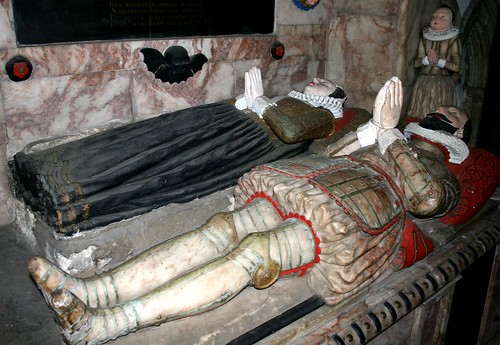
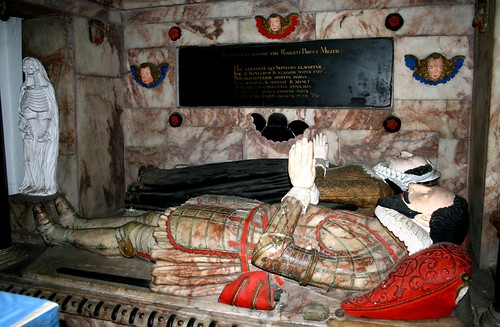
More macabre details on the tomb...
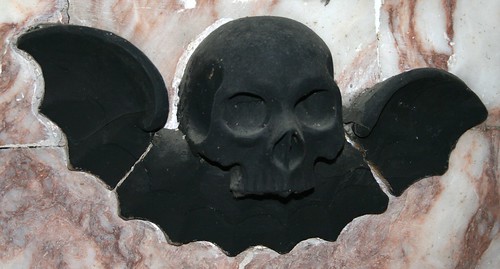
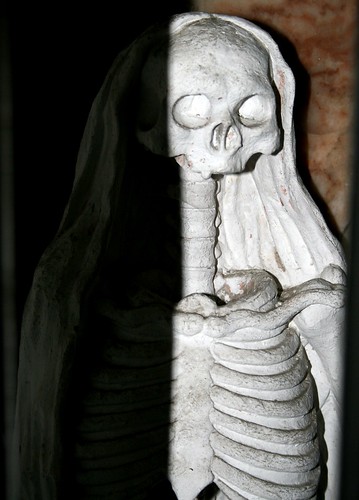
One of the monuments was a stark reminder of how tragically high infant mortality rates were a couple of centuries ago.....
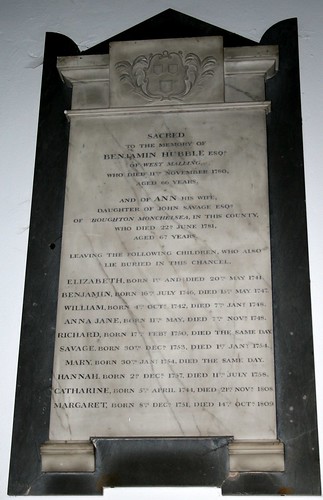
Benjamin Hubble and his wife Ann outlived eight of their ten children.

A quote taken from the Bible (Peter). I believe the plaque was made during the reign of King James II (1685 - 1688) the last Catholic King of England who was ousted in the Glorious Revolution.
These are just a few of the interesting things to be found inside the church. My wife and I must have spent at least an hour or so looking around.

The graveyard outside contains many reminders of the town's long association with Royal Air Force.
During the Battle of Britain, despite being heavily bombed the airfield was able to remain operational. Guy Gibson VC, later to become leader of the famous Dambuster raid, was stationed at RAF West Malling during 1941. In 1944, Spitfire aircraft were used to intercept and destroy V1 rockets (doodlebugs) before they could reach London.
After the RAF left in 1969, the airfield remained in civilian hands until around 1992 when it finally closed and was redeveloped into the new "village" of Kings Hill.
Squadron Leader Hall of 25 Squadron is buried next to his colleague and co-pilot Flying Officer Levett.

Squadron Leader Hall and Flying Officer Levett were both sadly killed on 4th February 1957 when their Gloster Meteor NF14 night fighter WS 753 flew into high ground four miles east of Oxford during a night navigation exercise.
If you have enjoyed reading this post, please leave a comment. They are always welcome.
You may also like...
Manston Airport and the Hurricane and Spitfire Memorial
Tracing the Family Tree in Chelsfield, Kent




Hi Glen
ReplyDeleteThanks for your comments.I have put a link from our site.Comments were disabled because of spamming.Your Blog V.nice and will be a pleasure to peruse,and maybe get some ideas for walks from.
Good Luck
Twisden
Bishop Gundulf was fantastic, wasn't he? I love a patron who knows what looks good, has the money to pull it off and goes to great trouble to make sure his dreams are made real by good architects and masons.
ReplyDeleteHi Glen
ReplyDeleteIsn't England wonderful? Our history is just so rich. Our village church was built in 1110. East Anglia is full of Norman churches - you cannot stand anywhere in the whole of Norfolk and not be in sight of a church1
Have done the Spitfire memorial and Manston when we came down to Whitstable earlier this year. But until I read this post, I didn't know about Guy Gibson being at Malling. Quite funny, as last Autumn we were up in the peak district and visited Lady Bower reservioir where Barnes Wallace (or is it wallis?) did the testing and they too have a dambusters memorial.
Wonderful stained glass windows and a great hi-res photo.
ReplyDeleteHi Glen, another insightful post. I really like the back of the £10 fact. Love that kind of stuff! Best, Phil
ReplyDeleteThis is such a lovely post! I love how preserved the tombs are and all the lovely details in the church.
ReplyDeleteI was thought to be too young to attend my uncle Alan Hall's funeral, whose gravestone you have photographed - I see someone has put a small plant on the grave; F/O Levett was his navigator. The accident investigators blamed metal fatigue and recommended strengthening of the cockpit canopy, which flew off catastrophically at altitude causing his fighter jet to powerdive vertically into Shotover Hill, Oxford. Alan was then a few weeks from completing his tour with 25 Sqn and according to his widow Margaret, had just received notice of his promotion board and was anticipating a non-flying role. I am glad to see both their graves are still well kept after 54 years.
ReplyDeleteThank you for this information. I am sorry for the loss of your uncle. F/O Levett (Arthur) was my Grandfather.
DeleteAndrew - thanks for visiting my blog and for the additional personal information which is very interesting. All the military graves in this churchyard (of which there are very many due to the town's long association with the RAF) appear to be very well tended.
ReplyDeleteGlen